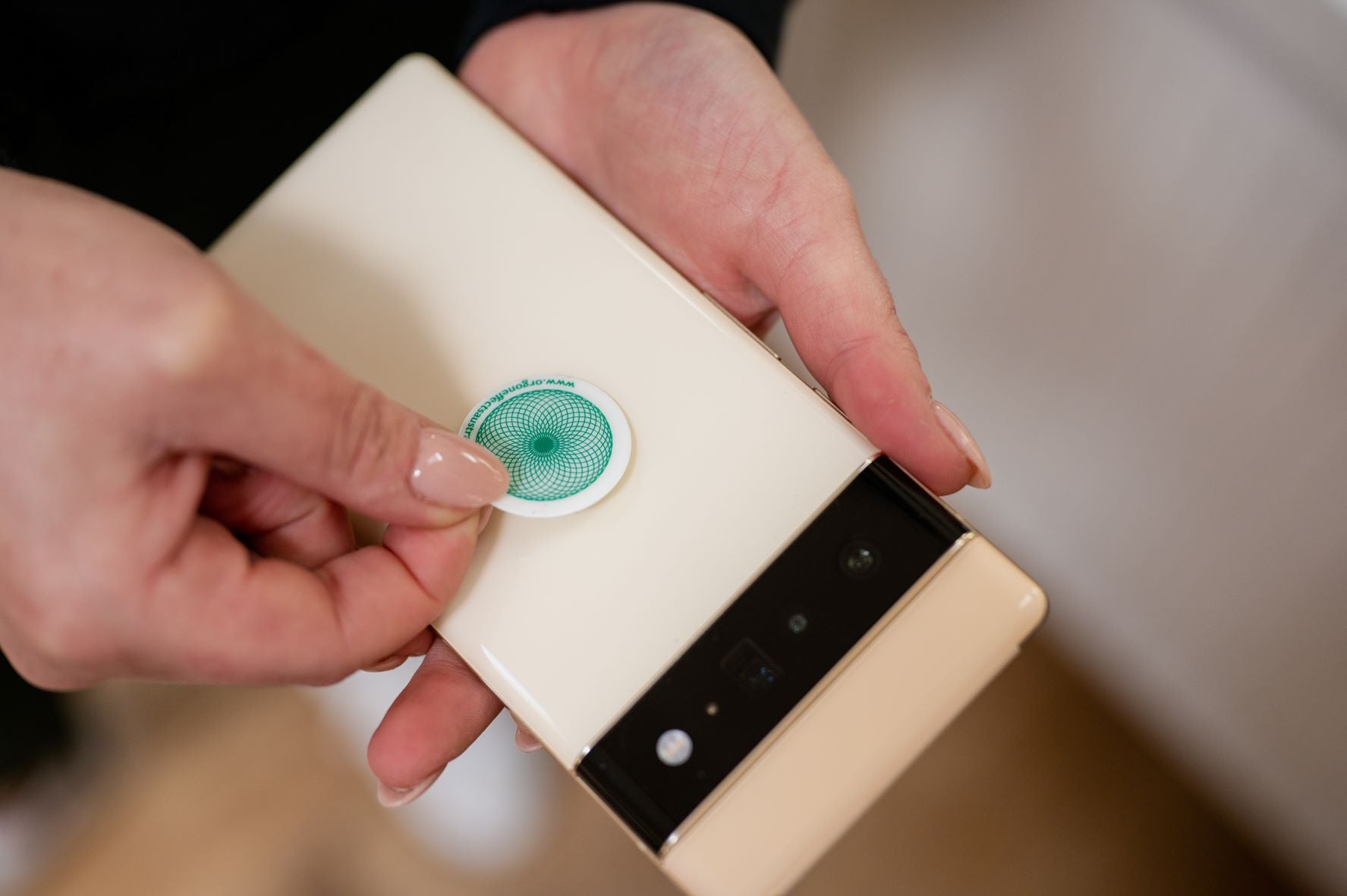Due to the rapid evolution of technology, more and more people opt to use wireless devices because they are easy to use and portable. Some of these devices have such a range that you can use your laptop or computer even from the sofa.
One of the most popular wireless devices people use today is the wireless mouse. If you use a wireless mouse regularly, you might wonder, “Does a wireless mouse give off radiation?”
To make this easier, we’ve created a simple Wireless Mouse EMF Exposure Calculator. It’s simple to use—just enter details like the mouse’s power, how far away you sit from it, and how long you typically use it each day. In just a few clicks, you’ll get an estimate of the EMF exposure you’re likely getting.
Does a Wireless Mouse Emit EMF Radiation?
A regular wireless computer mouse gives off a small amount of EMF radiation. A wireless mouse uses radio frequency waves, which also release electromagnetic radiation. A wireless mouse with a USB receiver gives off more EMF radiation when transmitting signals. PS2 mice emit weak electromagnetic waves compared to wireless mice.
A wireless mouse transmits signals at a frequency of 2.45 GHz and radiates at 2.4 GHz. If you put your hand on the mouse’s circuits, you may be exposed to radiation. Your fingers are near the internal circuit board and when you use the wheel, you are more exposed through the gap in the plastic cover where the wheel sticks out.
The device gives off EMF radiation by sending commands to your laptop through the air. The radiation it emits can be harmful to the human body. Excessive exposure to the wireless mouse can cause pain in different places in the bones, fingers, and even muscles. Long-term exposure to radiation can lead to serious damage, like altering the body’s DNA cells.
Different wireless devices use various types of radiation, and each one transmits at a unique wavelength and frequency. Most wireless devices operate at frequencies ranging from 3 kHz to 300 GHz. Most wireless mice use Bluetooth technology to connect to your computer and they give off a high level of EMF radiation.
How EMF Radiation from a Wireless Mouse Affects You
People with electromagnetic hypersensitivity (EHS) commonly feel tingling and numbness in their fingers while using the computer. This problem is mainly caused by using a wireless mouse or keyboard.
Although a wireless mouse can be quite convenient for you, it exposes you to microwave radiation, much like the radiation from cell phones. Therefore, you are exposed to EMF radiation every time you use the wireless mouse, even if it is relatively low. The level of exposure stays constant and depends on how long you use the mouse each day.
To reduce your exposure, you can use a mouse with a standard USB cable circuit that emits low levels of EMF radiation when connected. PS2 port gives off low levels of EMF radiation compared to other types of mice.
There are different versions of USB mice that operate in various frequency bands. Even if you use a power source with relatively less “noise”, it will be tough to filter the USB connections. The signal lines from your computer and the connected mouse will always give off high-frequency noise. The best way to reduce signals is to add an internal protector to the mouse cover.
The radiation exposure from the wireless mouse is similar to that of a Bluetooth Wi-Fi mini tower. The more time you spend on your computer, the higher your radiation exposure. Therefore, please turn off the Bluetooth function on your computer after using a wired USB mouse.
When the battery is low, the mouse emits more radiation than when they are new or fully charged. To reduce your exposure, be sure not to use the mouse when the battery is low.
Another alternative is to go for a wired mouse instead of a wireless one. A wired USB mouse can be used on any device and is inexpensive.
If you connect smart devices to your home or office’s electrical wiring using higher frequencies, they give off high frequencies.
Even if you use a wired router, your computer can also send out wireless signals that emit electromagnetic radiation. Therefore, check your computer settings and turn off the computer’s wireless card to avoid further radiation exposure while using it.
Therefore, if you are sensitive to electromagnetic waves, it’s best to use a wired mouse, and also turn off your computer’s wireless card.
Also, you can install the Geoclense Orgone Negative Ion Generator to protect yourself and loved ones from EMF radiation at home and in the office. It consistently generates healthy beneficial Negative ions that work by harmoniously neutralizing your entire property and home all the way to its boundaries, counteracting each one of these destructive energies such as radiation and electromagnetic frequencies.
If you use a laptop that constantly gives off microwave radiation nearby, you can stick a Computer Radiation Protection Sticker to reduce your exposure. This all-in-one EMF protection sticker shields you from the radiation of electronic devices, blocking out up to 95% of harmful radiation.
EMF Levels of a Wireless Mouse
A wireless mouse and other computer peripherals generally emit radio frequencies between 27 and 2400 MHz, with a peak power of up to 10 mW.
Wireless mice emit very low-frequency EMF (ELF-EMF) and radiofrequency (RF) radiation. Most wireless signals from PC peripheral devices have lower frequencies than microwave signals and radiofrequency waves in the electromagnetic spectrum.
You can measure signal strength with an RF meter and results are reported in microwatts or milliwatts (mW) per square meter or per square centimeter. Using these meters allows you to check the EMF levels of the devices you use at home or in the office.
Alternatively, if you don’t have an RF meter on hand or prefer a simpler solution, you can use our Wireless Mouse EMF Exposure Calculator. By entering basic details such as the mouse's transmission power, frequency, distance, and your usage duration, this tool will estimate the EMF exposure you might experience. It’s an easy and quick way to understand your exposure levels without the need for extra equipment.
Final Thoughts
A wireless mouse with a USB receiver emits radiation, although the level of EMF radiation given off is relatively small compared to other wireless devices in your home.
If you’re sensitive to electromagnetic fields, you may experience tingling and numbness in your fingers while using a wireless mouse. This is not practical, especially if you’re using the mouse for long periods.
Others have mentioned feeling headaches while using the computer. These effects result from using wireless devices, including wireless mice. Depending on the mouse, some give off RF signals while others give off microwave signals.
Continued exposure to the microwave signals emitted by your wireless mouse can affect your body and increase your risk of health problems. If you’re worried about this, you can switch to a regular wired USB mouse.



